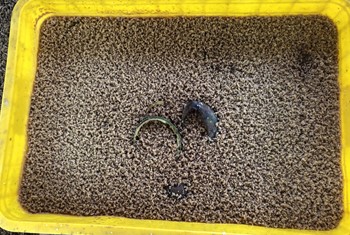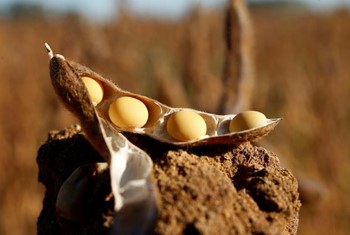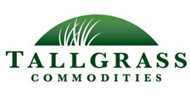There was a lot of activity on Thursday 9th of April including the release of the WASDE in lead up to the long weekend. Our US colleague Arlan Suderman has summaried the WASDE as follows “UDSA incorporated its March 31 stocks data into its WASDE supply and demand balance sheets this morning in its monthly report, while also revisiting its South American production estimates. The agency made significant changes to each balance sheet, mostly raising stocks, but prices reacted positively amid the "risk-on" sentiment in the broader markets and traders were also grateful that bearish adjustments were not worse.”
Over the weekend we had OPEC+ confirming a deal to cut production just under 10 mil bbls per day.The analysts are not impressed with these cuts as the demand drop due to COVID19 is estimated at between 20 – 35 million bbls per day. However, the protracted negotiations and last minute compromise of unhappy parties to accept the deal at least proved that the larger group can work together in difficult times. The market appears to have taken some solace in that. Brent crude is up 5.50% at the time of writing this.
Corn:
Corn had some better than expected export numbers with 1.85 mmt sold vs. 0.55 mmt LY as US corn continues to be the most competitively priced globally. WASDE cut imports by 5 mil. bu. and raised feed usage by 150 mil to 5.675 bil bu. Ethanol corn usage was cut 375 mil bu. to 5.05 billion which is a bit convervative by understandable as we need to see how long COVID19 led demand destruction in gasoline lasts. In short there was nothing ( as expected) to make the bulls happy as carryout is expected to expand to 2.092 bil. bu up from previous estimates of 1.892. CONAB raised its Brazil corncrop estimate by 1.8 mmt on bigger safrinha acerage. The agency is now at 101.9 mmt with the USDA unchanged at 101.0 mmt. USDA changed global ending stocks to show a gain to 303.17 up from previous estimate of 297.34.
( Corn +0.07% at the time of writing this report )
Wheat:
Wheat closed higher on Thursday driven primarily by the weather as the WASDE was bearish.
Export sales: old crop at 258k mt vs trade estimate of 50-200k mt. while new crop sales at 117k mt vs trade guess of 150-350k mt. Old crop sales were lagging the USDA estimate by 25 mil bu. and the WASDE adjustment by the USDA lowering HRW and SRW sales were supported by the current data. For the WASDE report the USDA lowered exports 15 mil bu. to 985 mil bu., HRW 10 mil bu. and SRW 5 mil bu., due to the slow pace of sales and according to our US colleagues it makes sense to do it in the April report vs waiting for the May one as the US wheat has been uncompetitive over the last month in the nontraditional export markets. Feed numbers were lowered by 15 mil bu. to 135 mil bu. and this was not expected. World numbers from the USDA were overall bearish with record world carryout, with minor changes seen on the supply side but world demand was lowered 5.1 mm. China at -2.0 mmt, India at -1.9 mmt and EU at 1.0. Russian exports were lowered to match the current government export restrictions and the EU was increased 1.5 mmt reflecting the current export program. Global stocks were increased 5.6 mmt to 292.8 mmt.US weather models last week convering the Southern Plain are showing continuation of the cold as far south as Oklahoma state.The overnight weather forecasts show continuation of the his weather pattern.
(Wheat +1.10% at the time of writing this report )
Soybean Complex:
Soybean were supported on Thursday. In the WASDE report the USDA raised crush by 20 million to 2.125 billion, bringing it closer to our US economist's long-term estimate of 2.135 billion bushels. It cut exports by 50 million to 1.775 billion bushels.
On the world scale the feature was SA production reductions, declining world demand, and bigger Chinese imports. The USDA lowered
Brazil’s soybean production 1.5 mmt to 124.5 and while CONAB lowered Brazil 2.1 mmt (lower yields) to 122.0 mmt. The USDA also lowered
Argentina production 2 mmt to 52 mmt. Argentina says its soy crop is 16% harvested vs 20% normal. The USDA also lowered world demand
by 1.7 mmt and raised China’s import forecast by 1 mmt. World carryout was lowered by 2 mmt to 100.45 mmt. The export sales were on
the low side of expectations with 523.5 tmt but were double that of a year ago and had China purchases in it which is noteworthy given that
Brazil continues to out compete US origins on a delivered basis.
(Soybean +0.29%, Soybean oil +0.12%, Soybean meal +0.07%)
Palm Oil:
Palm oil had a sell off on Thursday as bearish market comments on demand destruction due to COVID19 weighed on the market. Friday the market traded in a narrower range as it awaited the MPOB official data and closed close to unchanged. Production was 1.397 mmt (+8.44% vs previous), exports were at 1.181 mmt (+9.15% vs. previous) and end stock were marginally up at 1.729 mmt. The the end stock was a surpise with estimates of a decrease and is the 1st monthly increase since Sept 2019. Over the weekend the lifting of restrictions on palm operations in the state of Sabah and should put further pressure on prices. Initial estimates on April 20 SnD are expecting increase in end stock by 4%, with production dropping just 1% but exports dropping 5%.
 Consumer behavior changing dramatically in Asia
Consumer behavior changing dramatically in Asia  Raising this species of flies and then taking the eggs to sell for 3 million VND / 100 grams of fly eggs
Raising this species of flies and then taking the eggs to sell for 3 million VND / 100 grams of fly eggs  Poland: Poultry feed production hampered by Covid-19
Poland: Poultry feed production hampered by Covid-19  How to slow pig growth due to Covid-19?
How to slow pig growth due to Covid-19?  June feed update: What did you miss?
June feed update: What did you miss?  Good weather in the US slightly reduces soy price
Good weather in the US slightly reduces soy price PTT Trading Service Co., Ltd
(Vietnam Address)
462, Pham Thai Buong Street,
(R3-37 My Toan 1 - H4), Phu My Hung,
Tan Phong Ward, District 7,
Ho Chi Minh City, Vietnam
Tel: (+84) 286 6868 5888
Singapore Office:
Blk 457, Pasir Ris Drive 4, #09-305
Singapore 510457
Contact: (+84) 903 077 931
Email: jeffreypang@pttgroup.org






.JPG)













